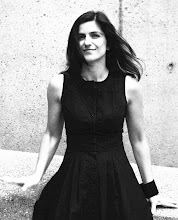Thesis Lab Review: Notes
Thesis Lab 2014 has been about experimental architecture. It asked two big questions.
On relevance: What matters as a contemporary architectural thesis?
On vision: What architects need and want to do with their practice?
The discussion at the end of the review opened up to the students who have been very enthusiastic about their experience in Thesis Lab. Some of them valued the freedom, the constant experimentation even at the very end, and the production of full-scale installations-architectures that offered themselves as experiences to us on a regular basis. (Within a term of 4 months, some students have completed 10 of those). In many occasions external critics expect (or not at all) from the students to "translate" their installation into what they call as architecture. In this class students took different approach to propose a building, a pavilion, another installation, or even a publication, as the final outcome of their experimentation. Many of those argued how their spatial experiments have been "architecture." The focus of the thesis studio has been indeed to find new forms of architecture and how the latest can become relevant to address bigger global contemporary concerns. The now historical example of the architects-artists Diller Scofidio & Renfro (DS+R), makes a good case to liberate many of the architects not to expect a translation between the installation and the building. It is hard to see the direct connections between the two different forms of work that DS+R have been testing throughout their careers. What is clear in their case (with the exception of the latest MOMA drama) is that whether it is a building, or a stage design, or an artwork, their creations make us shift our perspectives, boring routines, and have better quality of surroundings.
Three particular students in Thesis Lab 2014 experimented full-scale weekly. They utilize all resources available, lot of time, and took risk to create multiple architectures for us to experience every Thursday, usually in room B. Their method has been to sculpt space, to make columns, walls, projections, to manipulate air, light, sound, color, shadows, kinesis, etc, to eventually construct new atmospheres in the crit room. The room, that can be compared to museum's white cube, acted as an open three-dimensional canvas for their creativity. One can imagine the effect of this formal experimentation in the future creations of these individuals. But even the current works can be easily re-configured to multiple functional spaces. Their motivation and investment to synthesize, compose, and critically experience these works have been impressive. Their examples contribute to the redefinition of Installation(s) term to belong more to the intersection of art and architecture (So one does not have to expect a translation). Their work is an expansion of a field started by Gordon Matta-Clark and continued by other contemporary ones (such as Junya Ishigami).
Beyond these three examples of installations that act as experiments-experiences, there has been another set of installations, of different style, that of guerilla tactics. Two students have been installing their work to provoke their peers in joining them into a larger, more collaborative architectural experiment: They were motivated to create space through a publication. Their experiments created the need to rethink how public space is shared and used by the various individuals and groups of academia. Many questions were raised about the process and methods to occupy these spaces, the relevance of aesthetics (and polished work), as well as the enthusiasm or tolerance by the public to those temporal interventions.
The emphasis is on the word temporal that comes with a large range. Temporary or/and ephemeral architecture has been in many cases the context of the studio work (in different scales too: expos, pavilions, kinetic structures). The role of play, performance, and events in architectural expressions definitely affects the duration of those architectures. Why architecture has to last forever (or very long)? There should be enough room for fantasy, imagination, and dreams to affect the current environments.
Another issue tackled in many of the works had to do with the social whether this is linked to segregation, public realm, or shared spaces (and resources).
A list of all the works presented can be found in the Thesis Lab 2014 review invitation [Bee-Zee Link].
Notes on class methodology can be found in the text Why Thesis Lab? [Bee-Zee Link] also published at Wentworth Graduate Architecture Thesis Book (2014).
The documentation of the course work can be found in the Thesis Lab exhibition-publication [Bee-Zee Link].
Notes on class methodology can be found in the text Why Thesis Lab? [Bee-Zee Link] also published at Wentworth Graduate Architecture Thesis Book (2014).
The documentation of the course work can be found in the Thesis Lab exhibition-publication [Bee-Zee Link].



0 Comments:
Post a Comment
<< Home